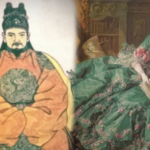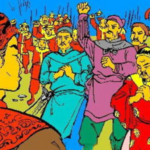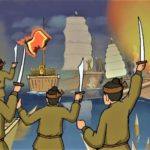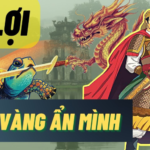The significance of the Battle of Bach Dang in 938
The Battle of Bach Dang in 938 was a battle between the Tinh Hai navy of the Tinh Hai region (at that time, Vietnam did not have an official name) led by Ngo Quyen and the Southern Han army on the Bach Dang River. The result was a major victory for the Vietnamese people thanks to the sharp stake strategy under the Bach Dang River by Ngo Quyen.
In the face of the fierce fighting of the Vietnamese, more than half of the Southern Han army drowned, and the Southern Han prince, Liu Huangtao, also died in battle. This was an important battle in Vietnamese history. It marked the end of Vietnam’s more than 1000 years of Northern subjugation and restored national unity for the Vietnamese people.
After this victory, Ngo Quyen ascended the throne and reestablished the country. He was regarded as the “king of kings” in Vietnamese history. The great victory on Bach Dang River depicted his strategic prowess and battle skills.
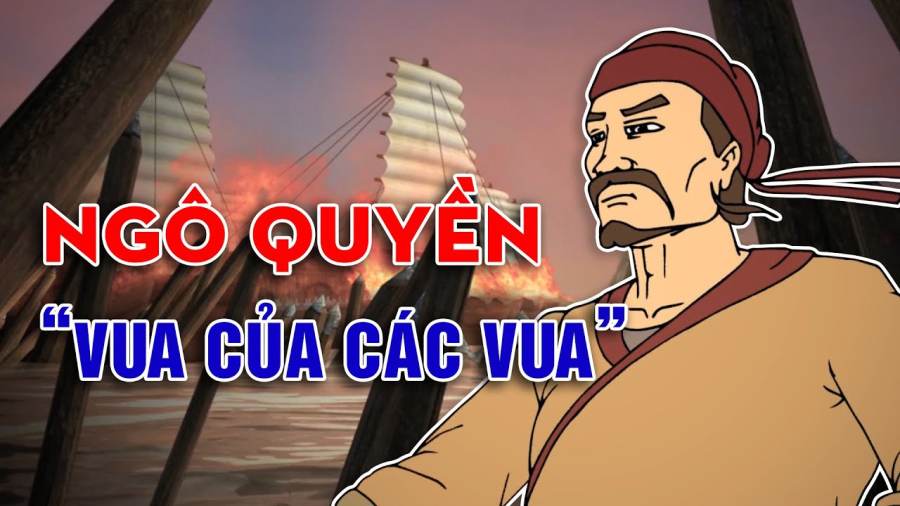
A glimpse of Ngo Quyen and his life
According to the Complete Annals of Dai Viet History, Ngo Quyen was born in 898 in Cam Lam village (now part of Duong Lam commune, Son Tay, Hanoi). He was born into a “nobility for generations” family, with his father, Ngo Man, holding the position of Chau mục ban chau (Duong Lam Chau).
When Ngo Quyen was born, there was light all over the house, his appearance was extraordinary, with three birthmarks on his back, and his physiognomy was considered unique. People said that he could become a lord in the future, so he was named Quyen. As he grew up, his appearance was handsome, his eyes were as bright as lightning, he walked calmly like a tiger, he had courageous wisdom, and he had the strength to wield a sword.
When he was young, Ngo Quyen lived in the countryside with his parents. With his father’s upbringing, he quickly understood martial arts and the secrets of military tactics.
As he grew older, when the country began to gain autonomy starting from the Khuc family, Ngo Quyen took the initiative to gather forces and gradually became a prominent leader with power in Duong Lam, earning the respect of the people.
Later on, Ngo Quyen led the people to defeat the Southern Han army on the Bach Dang River, marking the peak of the military art of our country.
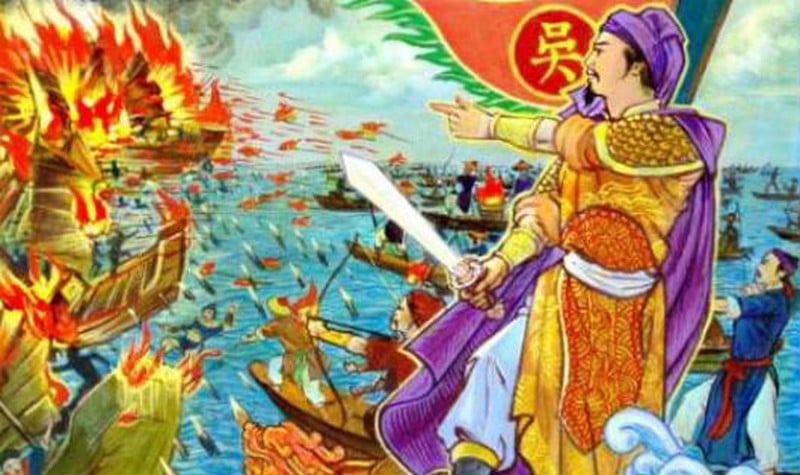
During the turbulent times of the country, Ngo Quyen, along with the Khuc family, participated in building the government in the early days of the country’s existence. However, the national independence at that time did not last long. In 930, the Northern Han invaded and defeated the Khuc family’s government, occupying the Dai La stronghold, which put the country under the control of the invading army.
In 931, Dương Đình Nghệ, a general of the Khuc family, led troops from Chau Ai to attack the Southern Han army, regain national sovereignty, and establish a new government for the Dương family. During the period when the Dương family raised the flag of rebellion and built the government, Ngo Quyen also actively participated. He was trusted by Dương Đình Nghệ to be the military advisor and married his daughter.
In the victory at Dai La in 931, Ngo Quyen played a pioneering role under the command of Dương Đình Nghệ, defeating the Southern Han’s plan to annex the country.
After the victory, Dương Đình Nghệ assumed the position of Tiết độ sứ (military governor), responsible for the important affairs of the country, and entrusted Ngo Quyen with the task of governing the Chau Ai region.
According to Vietnamese history books, a general of Dương Đình Nghệ named Kiều Công Tiễn killed the leader to seize the position of Tiết độ sứ. The people and the generals were very dissatisfied, including Ngo Quyen.
Ngo Quyen gathered forces from Chau Ai to Chau Giao to punish Kiều Công Tiễn. Despite being the grandson of Kiều Công Tiễn, Kiều Công Hãn stood on the side of righteousness in the face of foreign invasion. In the face of Ngo Quyen’s powerful forces present in all regions from Chau Ai to Chau Hoan and to Chau Giao, the Kiều Công Tiễn forces in Dai La were isolated and at a complete disadvantage. This traitorous person from the Kiều family acted against the interests of the nation and sought help from the Southern Han.
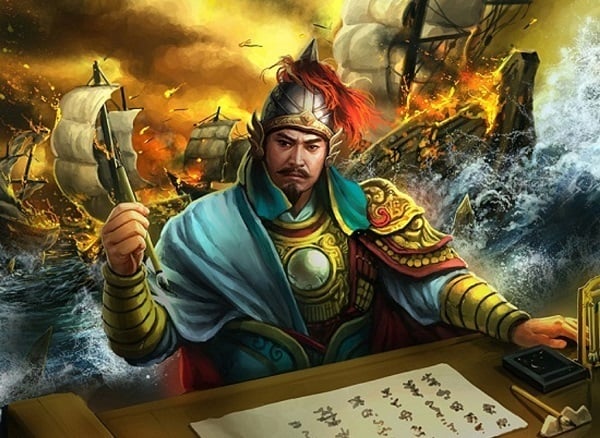
In the autumn of the Mau Tuat year (10/938), Ngo Quyen sent troops from Chau Ai to Dai La, killed the traitor from the Kiều family, cut off the internal response, and prepared for the decisive battle to drive out the foreign invaders.
When the internal rebellion was suppressed, Ngo Quyen expedited preparations for the strategic battle, annihilating the powerful naval forces of the Southern Han led by General Hoang Thao, which entered the country through the mouth of the Bach Dang River (Quang Ninh today).
In December 938, the fleet commanded by Hoang Thao relentlessly advanced from Guangdong straight into Vietnam (at that time known as the Tinh Hai navy) through the Bach Dang River as predicted. As soon as the first Southern Han boats appeared at the mouth of the Bach Dang River, the small boats immediately took on the role of provoking and luring the enemy into the battlefield.
The Complete Annals of Dai Viet History recorded: “When the tide rose, Quyen sent people to take light boats to provoke, pretended to lose and fled to lure the enemy to chase. Hoang Thao indeed advanced his troops. When the naval forces had entered the stake area, the tide receded, and the stakes emerged. Quyen then advanced his troops to attack, and everyone fought bravely to the death.
The troops of Hoang Thao could not repair their boats, and as the tide receded rapidly, the boats got stuck in the stakes and capsized, causing chaos and destruction, with more than half of the troops drowning. Quyen capitalized on his victory, pursued and killed Hoang Thao.”
According to Vietnamese history, the Battle of Bach Dang River by Ngo Quyen was a fast and victorious battle, achieving the highest effectiveness in the history of the nation’s resistance against foreign invaders. It marked the complete end of over 1000 years of Northern subjugation and assimilation by the Northern feudalism, reclaiming independence and autonomy.
After defeating the Southern Han army, Ngo Quyen ascended the throne on February 1, 939, proclaiming himself as Ngo Vương (King Ngo), and he chose Co Loa as the capital (now Co Loa commune, Dong Anh district, Hanoi).
In Co Loa, the independent feudal state machinery of the Ngo dynasty began to be established. However, unlike the Khuc and Dương families, Ngo Quyen did not use the title of Tiết độ sứ imposed by the feudal authority but self-proclaimed as a king to assert the position of a nation that had just escaped from the night of subordination. Once he had proclaimed his title, Ngo Quyen established a royal court with the king at the head, complete with civil and military officials, ceremonial protocols, and dress codes.
The Complete Annals of Dai Viet History recorded: “In the Mậu Tuất year (939), in the spring, the new king proclaimed himself, appointed Duong Thi as the queen, appointed a hundred officials, and established royal protocols and dress codes”.
In 944, after 6 years in power, Ngo Quyen passed away at the age of 47. He did not have a temple or a posthumous name, and ancient history books only referred to him as Tiền Ngô Vương (Former King Ngo). The Thien Uyen anthology of images includes a story about the national teacher Khuong Viet mentioning Ngo Thuan Đế (posthumous name of Ngo Xương Ngập).
Before his death, Ngo Quyen entrusted his sister-in-law, Dương Tam Kha, to help his son, Ngo Xương Ngập, assume power. However, Dương Tam Kha seized the throne and proclaimed himself as Dương Bình Vương (King Dương Bình).
In 950, Ngo Quyen’s two sons, Ngo Xương Văn and Ngo Xương Ngập, regained the throne. Specifically, Ngo Xương Văn proclaimed himself as Nam Tấn Vương (King Nam Tấn), and Ngo Xương Ngập also became king, self-proclaiming as Thiên Sách Vương (King Thiên Sách).
From 951 to 956, the forces of the Đinh family, Dương family, and the imperial family of the Ngo dynasty revolted and opposed the government in Co Loa, marking the beginning of the Loạn 12 Sứ Quân era (Twelve Warlords era).
























